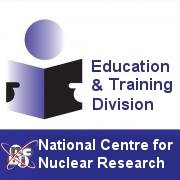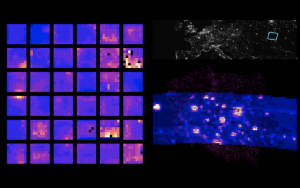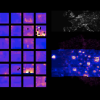Mini-EUSO over Poland
2021.06.01 11:22 - udgov_hsThe Mini-EUSO telescope is a device that has been floating on board the International Space Station (ISS) since August 2019, enabling the creation of an ultraviolet map of the Earth's nighttime atmosphere and the observation of its variability over time. The project, in which Polish scientists from the National Center for Nuclear Research participate, is the next step of the International JEM-EUSO Collaboration to the study of the atmospheric Extensive Air Showers generated by the highest energy cosmic rays using measurements from space.
The JEM-EUSO is a multi-stage project. The data collected by the Mini-EUSO detector provide valuable information ahead of the next, major research steps, when the large telescope would be deployed on one of the ISS modules. So far, three phases of the project have been completed: the EUSO-TA ground fluorescence detector installed in 2013 at Black Rock Mesa in Utah, USA; later, EUSO-Ballon, a stratospheric balloon equipped with a detection module, flew for 5 hours, and in 2017, EUSO-SPB (Super Pressure Balloon) performed measurements for 12 days. The Mini-EUSO telescope will precisely determine the nighttime UV background and measurement conditions, and define the apparatus configuration in the target experiment.
Determining the background involves mapping areas that are too bright for cosmic ray measurements. Most often these too bright areas are cities. The telescope shows the entire area of the globe available from the ISS, and has recently made measurements of the area of Poland. The animation shows bright areas that represent the nighttime ultraviolet glow of the largest Polish cities and the outlines of provinces.
Alonger version of the video shows the passage in almost normal time, because at this speed the telescope can see the surface of the globe. These few minutes illustrate a flight over Europe, from the UK to the territory of Ukraine. Visible temporary shutdowns during the flight over London and the Netherlands protect the detector from too much light - this is one of the functionalities of the high-voltage power subsystem made at NCBJ in Lodz.
The first publication of the Mini-EUSO results recently appeared: S. Bacholle et al., "Mini-EUSO Mission to Study Earth UV Emissions onboard the ISS", The Astrophysical Journal Supplement Series, 253: 36, 2021 April.


















